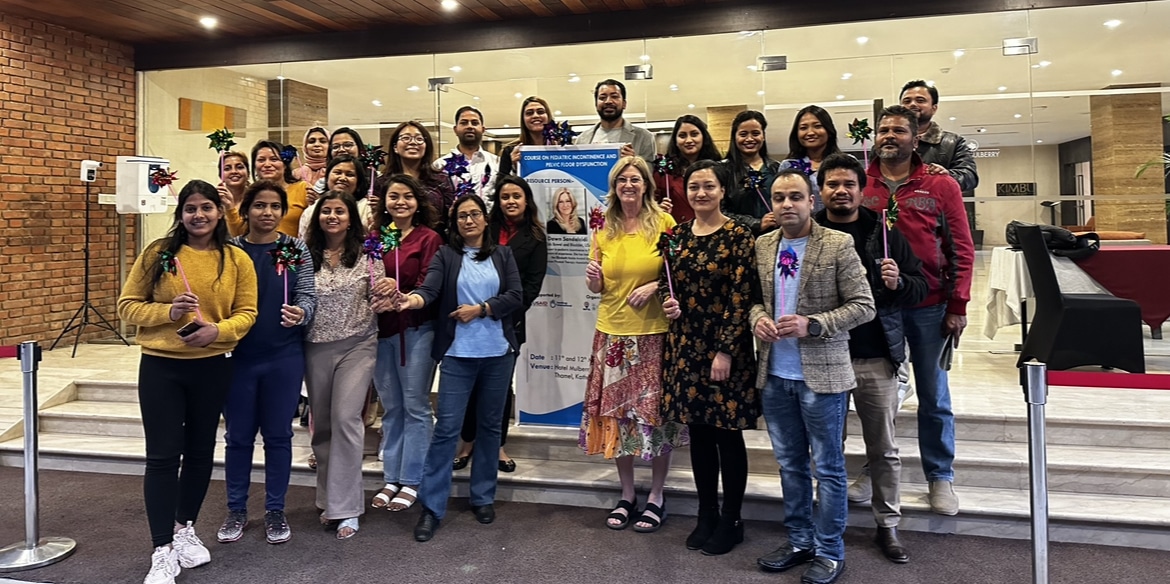
In this blog, I’ll be sharing my recent experience teaching a course on Pediatric Incontinence and Pelvic Floor Dysfunction in Nepal. This trip was not only about teaching, but also a chance to learn from the Nepalese people about their culture and healthcare system, particularly the ways in which children with bowel and bladder conditions are managed.
I’ll touch on various topics today, including things I learned while interacting with the local population, healthcare challenges faced by the Nepalese people, the recent local initiatives aimed at improving quality and access to care for children with special needs, as well as travel tips for those who might be planning to visit Nepal.
Join me on this journey of cultural exchange as I share my experiences and insights during my time in Nepal.
Why I Traveled to Nepal to Teach About Pediatric Incontinence and Pelvic Floor Dysfunction
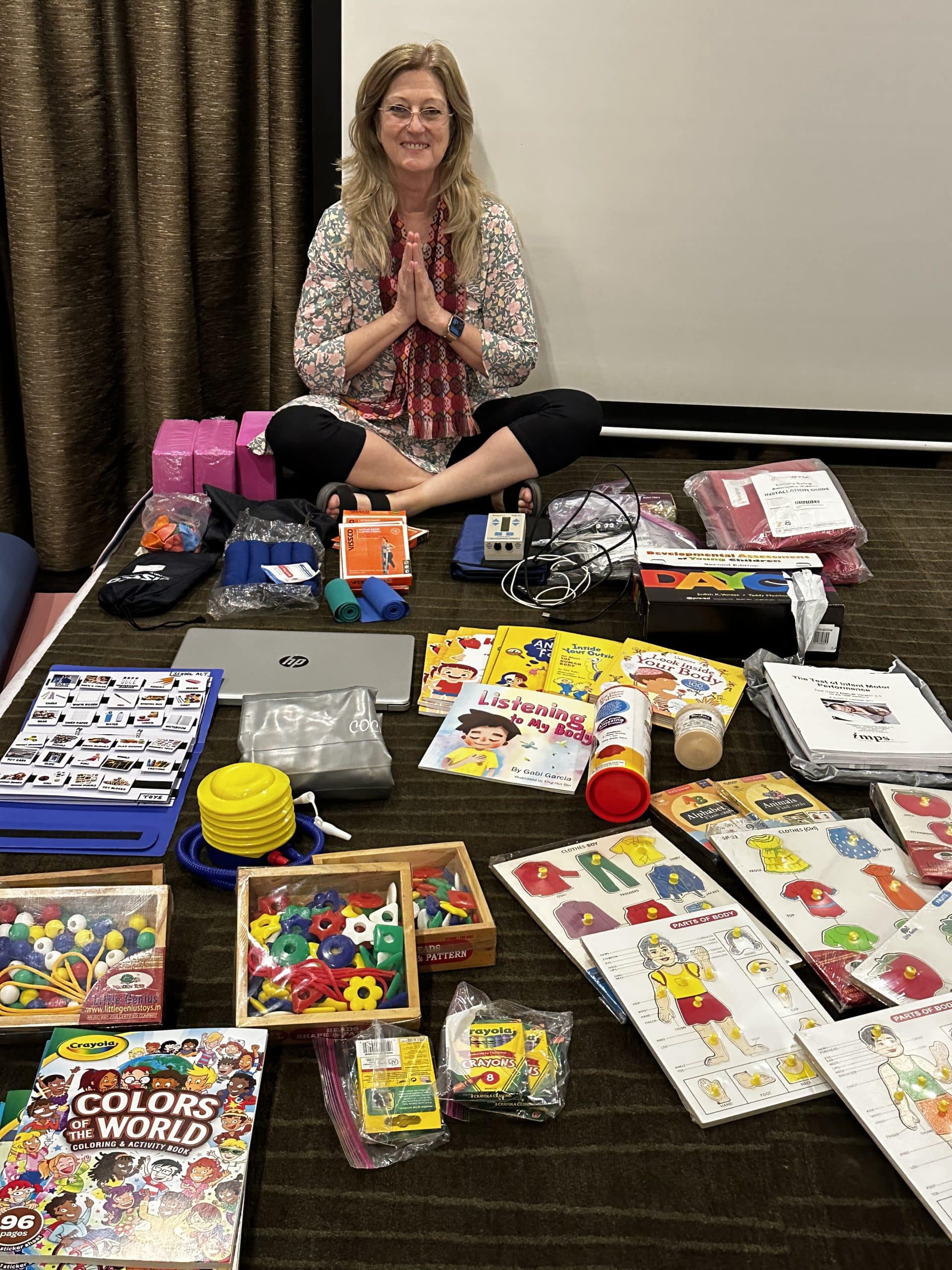
Nepal is a small landlocked country located in South Asia. Its total land area is approximately 147,181 square kilometers (56,827 square miles), which makes it the 93rd largest country in the world by land area. For reference, it’s about the same size as Arkansas in the United States.
Despite its relatively small size, Nepal is home to a diverse range of landscapes, including mountains, lush tropical forests, and the fertile Terai plains. The natural landscapes are stunning, and the ancient temples, monasteries, and palaces offer rich cultural attraction for tourists. Nepal is most known for its trekking and mountaineering in the Himalayas, including the world’s highest mountain peak, Mount Everest.
About three years ago, I reached out to staff from the Kathmandu University School of Medical Sciences (KUSMS) about teaching a course for pediatric incontinence and pelvic floor dysfunction.
Three years later, we were finally able to make the trip happen and I couldn’t be more grateful for my time in Nepal!
I’ve always wanted to visit this beautiful country and experience all that Nepal has to offer. I was able to combine my love for helping children overcome bowel and bladder dysfunction with my love for outdoor adventure — a perfect trip!
Teaching About Pediatric Incontinence and Pelvic Floor Dysfunction in Nepal
Something that stood out to me in such stark contrast to the United States is how incredibly respectful and professional the students of Nepal are. One student from each table would even stand up at the end of lecture to share reflections. My experience teaching at KUSMS was outstanding.
I was surprised to learn that nearly all Nepalese people speak fluent English, as well as several other languages. I didn’t have any issues at all communicating with folks during my time in Nepal.
However, as I was teaching on my first day, I would regularly pause and check in with the students to ask if the way I was explaining everything made sense.
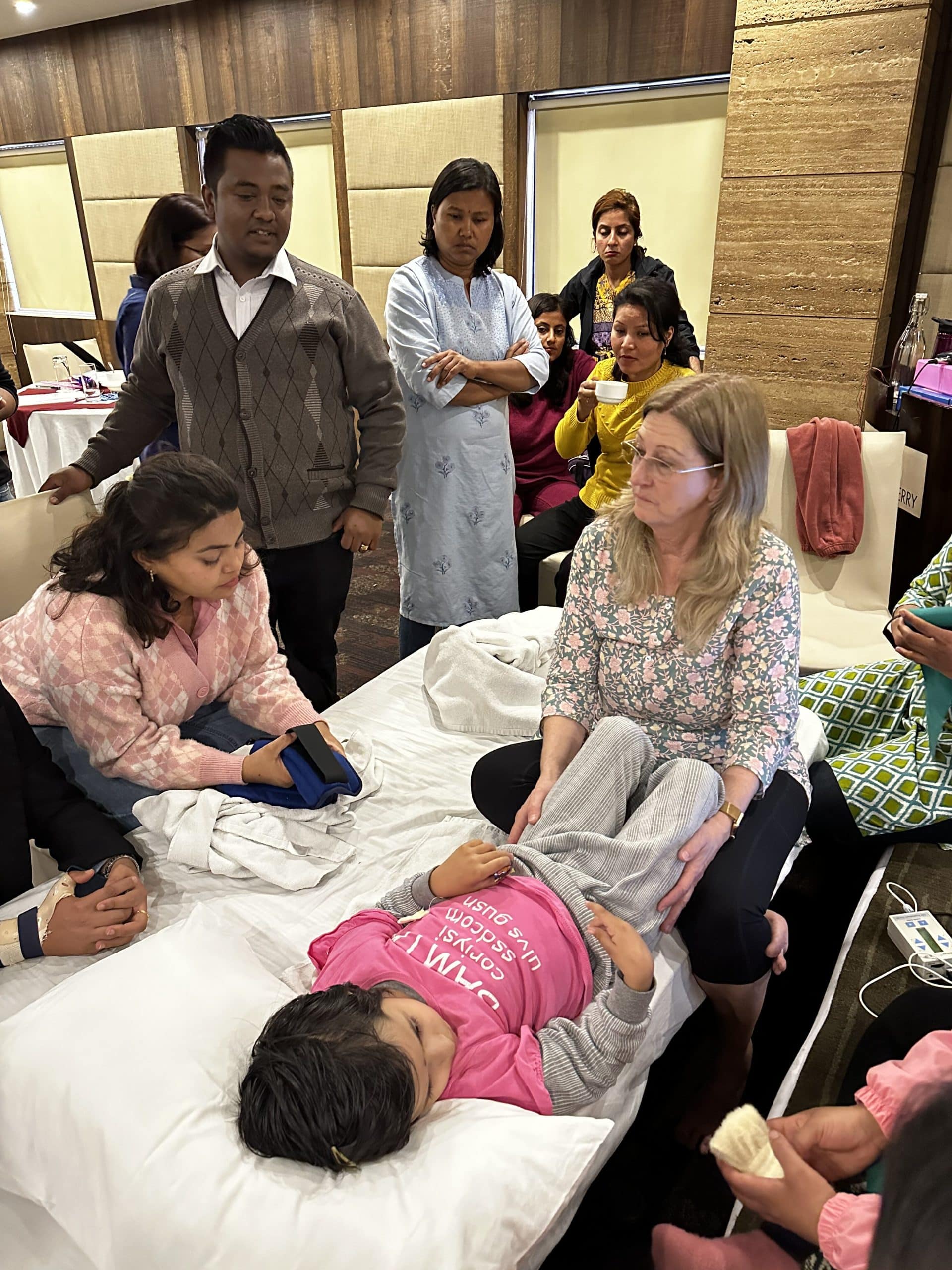
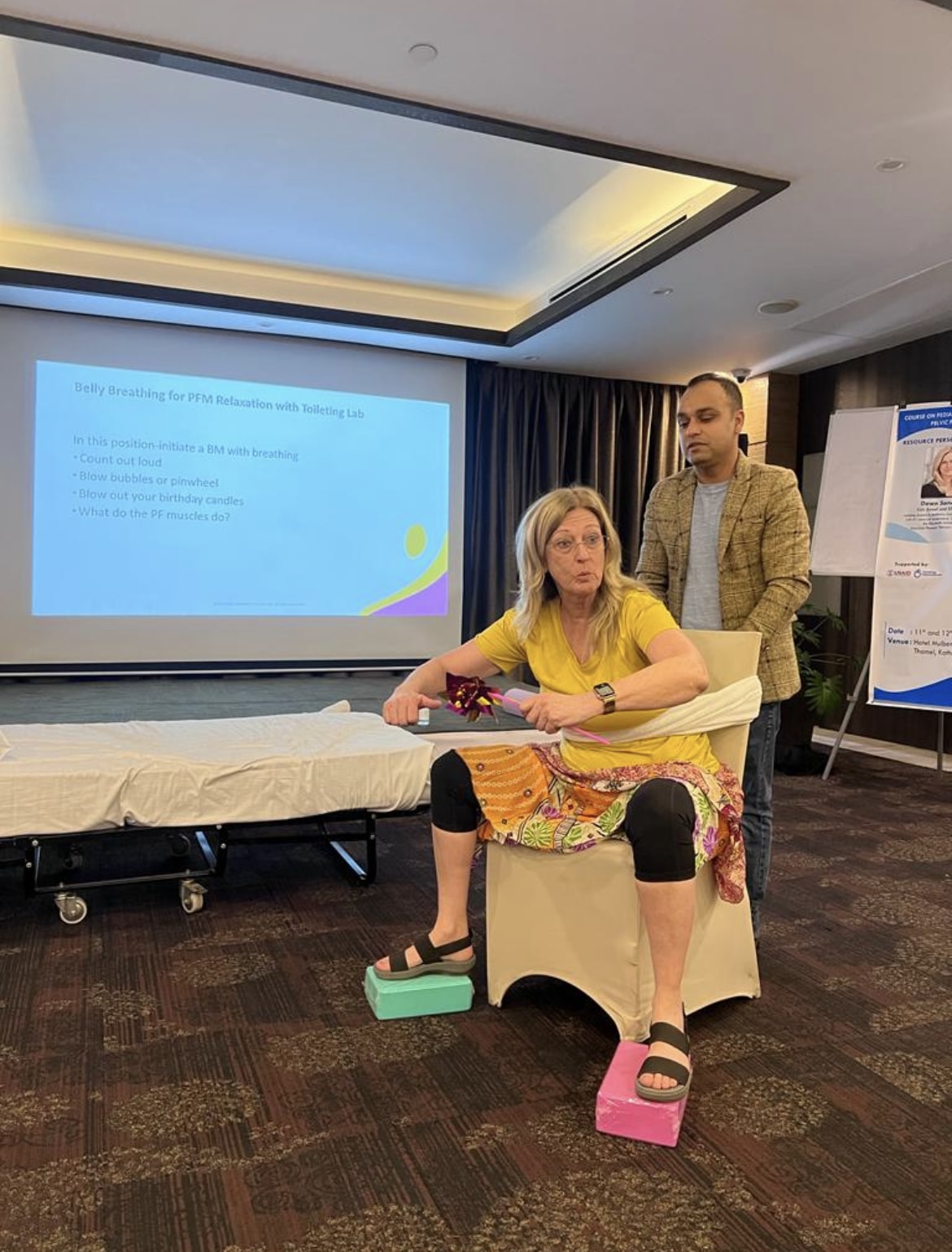
I started getting concerned because it seemed like they were responding with “maybe” head gestures.
I soon learned that in Nepal, tilting or bobbing your head side to side actually means “yes”, while nodding up and down (like we do here in the States) actually means “no” (here’s a fun little video to explain more). This took some getting used to!
My class consisted of PT and OT students from KUSMS as well and PTs/OTs from all 7 of Nepal’s provinces! It was a true honor and pleasure to teach and learn from the KUSMS students and staff.
Cultural Insights from Traveling Abroad in Nepal
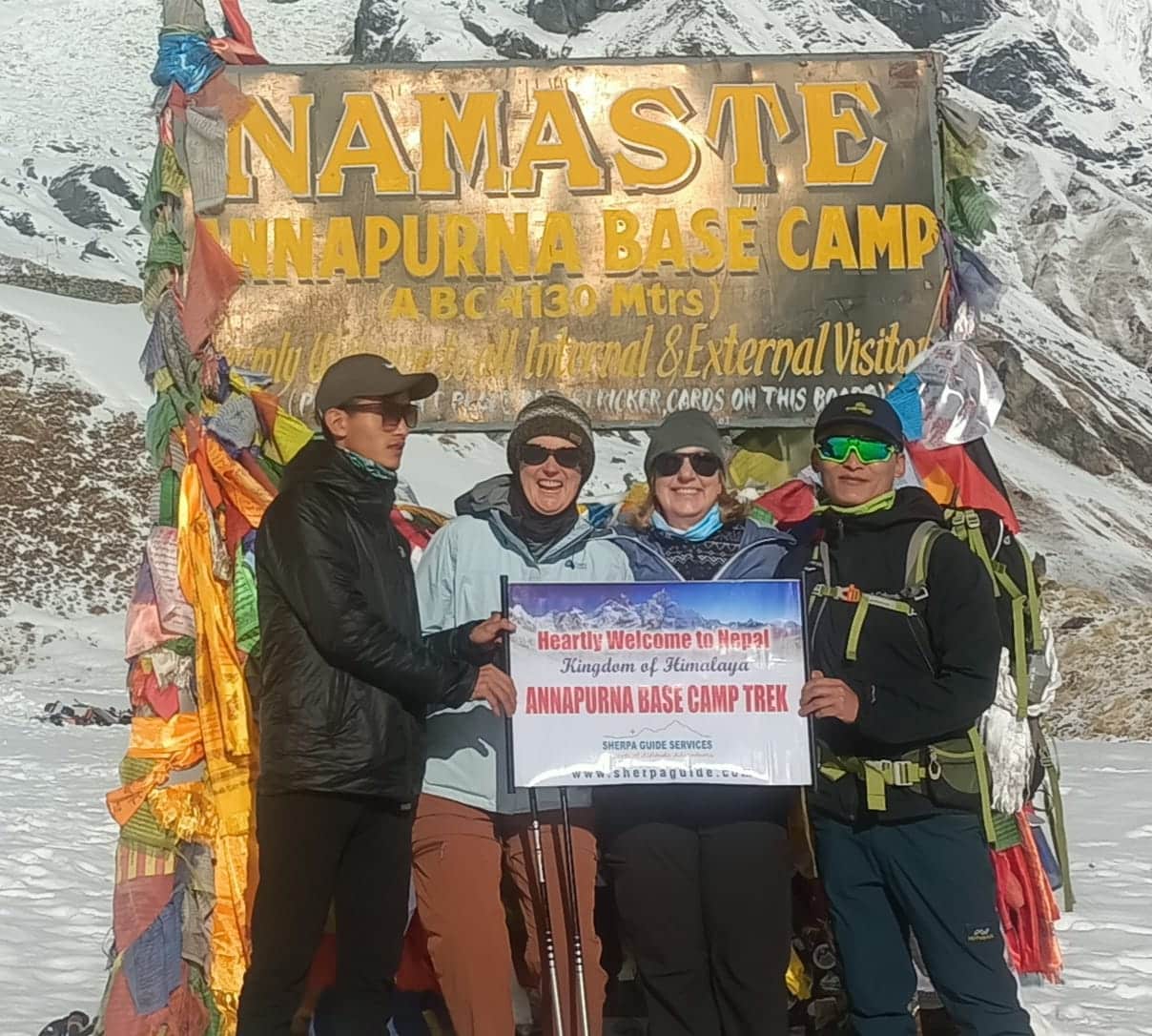
Nepal is a diverse country with a rich cultural heritage. After teaching my 2-day course, going to the University and the Self Help for Cerebral Palsy Center, I had the opportunity to explore some of its major cities and towns, and learn about their customs, food, and people. I visited Kathmandu, Pokhara, Lumbini and Chitwan, and found that each place had a unique culture and way of life. I also observed how religion plays a significant role in the Nepalese people’s lives as well as healthcare practices.
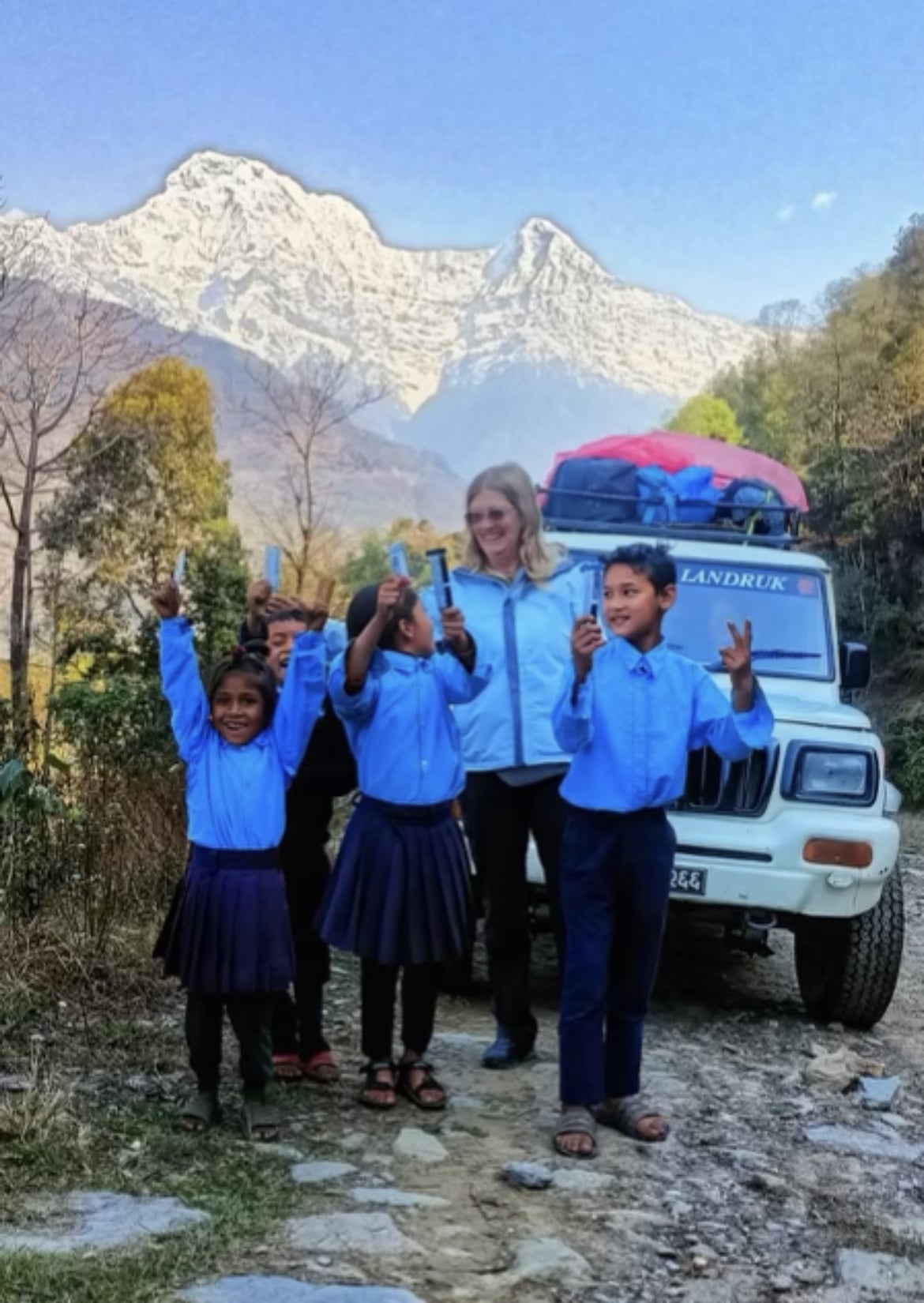
Overall, the Nepalese people are genuinely happy, generous, and humble. I met many families with not much more than a hut to live in, who made their own food from scratch over a fire each day, and walked everywhere they wanted to go — and these people were arguably the happiest people I’ve ever met.
If I had to describe the people of Nepal in one word, I’d say they’re (very) resilient. Because Nepal is still a developing country with a low-income economy, the people face many challenges including inadequate infrastructure and healthcare.
Dawn Sandalcidi giving snacks to school kids in a remote village.
Current Healthcare Challenges in Nepal
Nepal is still a developing country with limited healthcare resources, particularly in rural areas. The healthcare system faces numerous challenges, including inadequate funding, insufficient infrastructure, and a shortage of healthcare professionals.
Sadly, the only places in the country with handicap access are the hospitals. There are several places considered “hospitals” in Nepal, but most are more like clinics, called “health posts”. There are very few major hospitals in the whole country that treat acute or serious injuries.
After describing constipation to my students, I learned that nearly every child in Nepal is constipated. Treatment of pediatric bowel and bladder conditions is virtually nonexistent, and 100% of the care for children with special needs falls to the family.
Because access to care is a challenge, and handicap access is limited to hospitals and special facilities, any children who are unable to walk are carried everywhere, usually by their mothers. Wheelchairs for children aren’t common in Nepal for the most part. I never saw anyone in a wheelchair outside of the healthcare setting the entire time I was there.
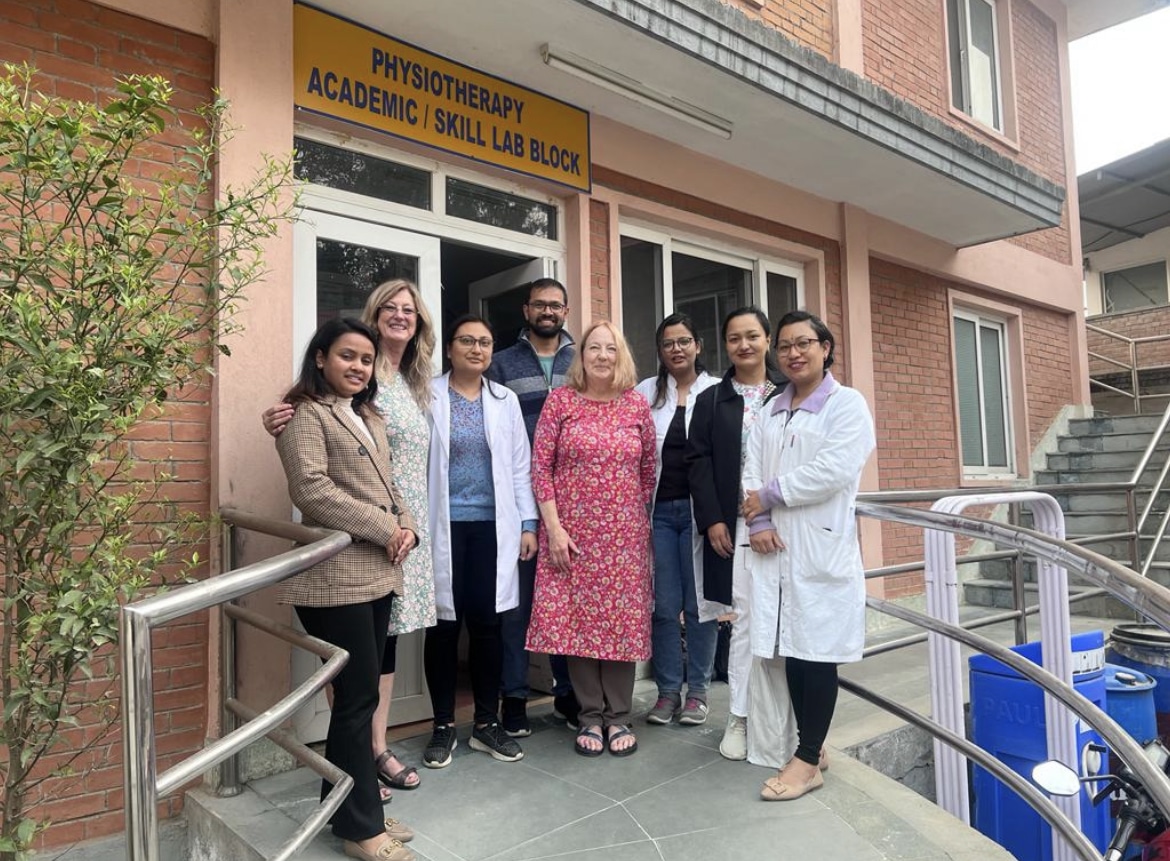
I also learned that management for incontinence and constipation in Nepal has the added challenge of cultural modesty. It’s rare for patients in Nepal to expose their bodies for treatment. For example, many people are not comfortable lifting up their shirts for providers to perform abdominal palpation.
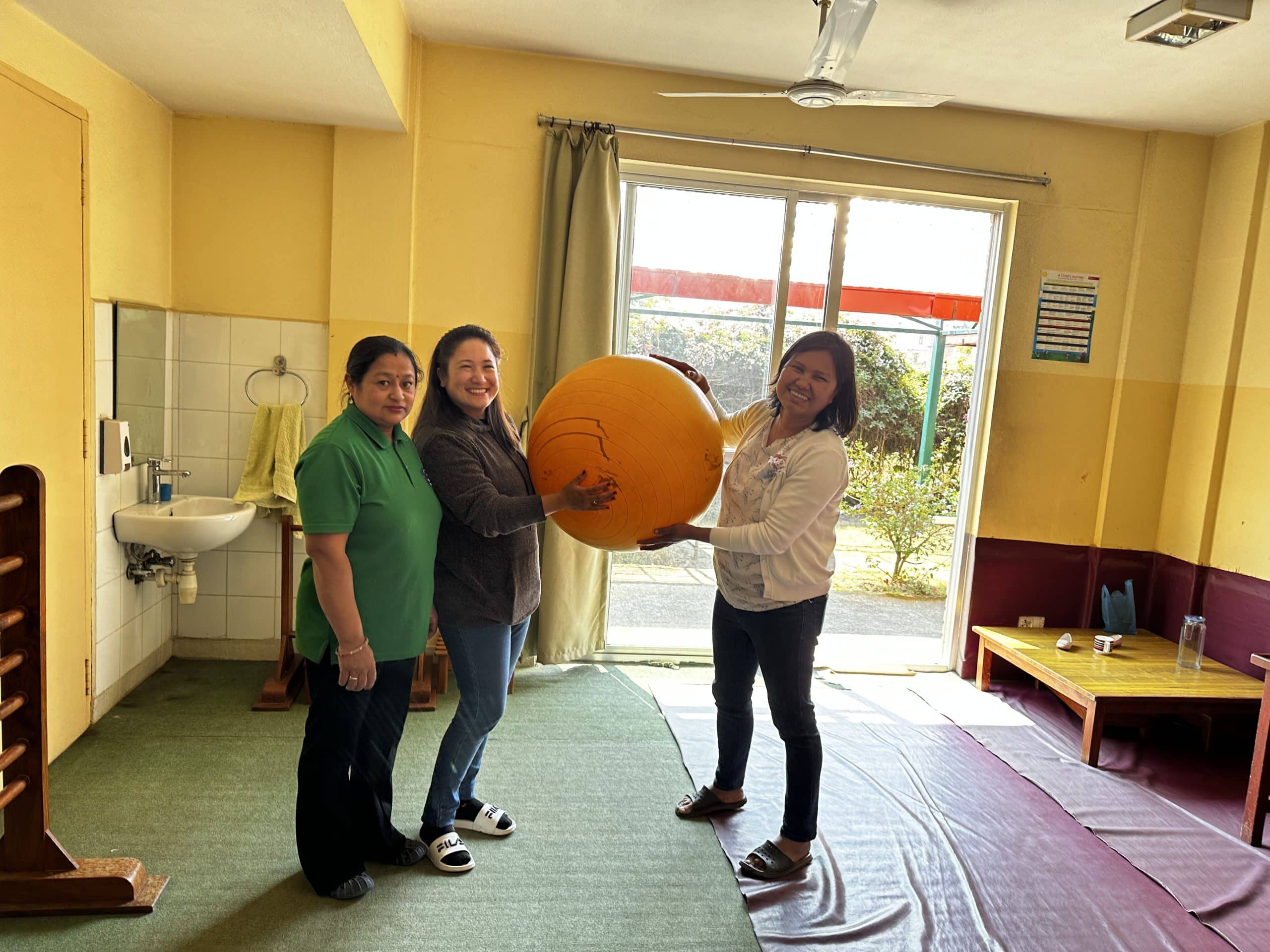
Pelvic Floor evaluation for pediatric patients is already challenging, and the added layer of not being able to visualize the body makes treatment very difficult for Nepalese providers.
I am thankful I had the opportunity to observe firsthand the challenges that both healthcare professionals and families face in providing care to their pediatric patients. I also saw how healthcare initiatives and partnerships with international organizations are making a difference in the lives of Nepalese people.
Local Health Initiatives in Nepal
I had the opportunity to discuss with healthcare professionals in Nepal how they are currently managing pediatric bowel and bladder disorders. Although treatment is limited, KUSMS and other universities are constantly working to expand educational opportunities.
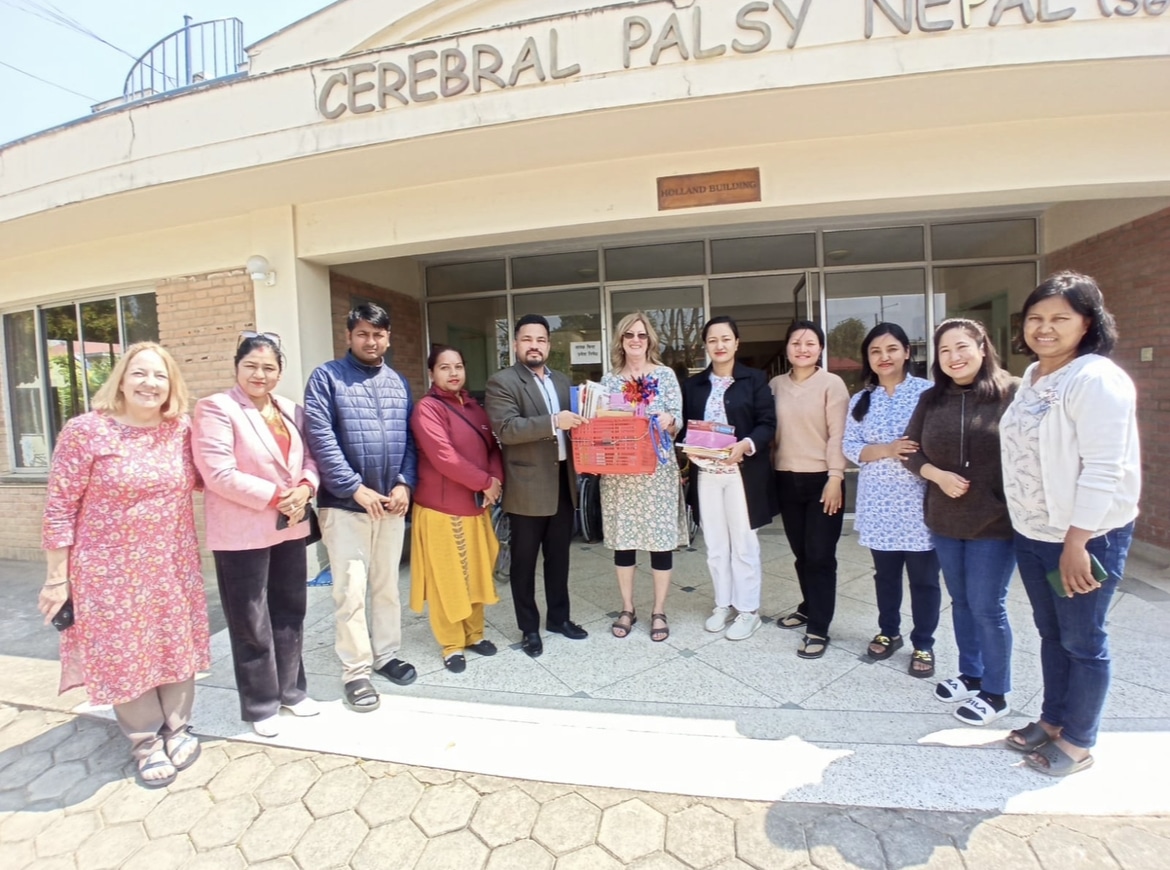
As of right now, children with cerebral palsy (CP) and other physically limiting conditions are not integrated into schools. These children are schooled at home by their parents. There are organizations in Nepal, such as the Self-help Group for Cerebral Palsy (SGCP), aiming to provide support for children and adults with CP. Children with cerebral palsy can live a qualitative life for about 20 years.
I also noticed in the local newspaper called The Kathmandu Post, an article written in April 2023 called “Cerebral palsy explained”. This article encouraged schools to “adopt inclusive education to integrate children with cerebral palsy” effectively. The author called for improved government assistance for disabled individuals as well.
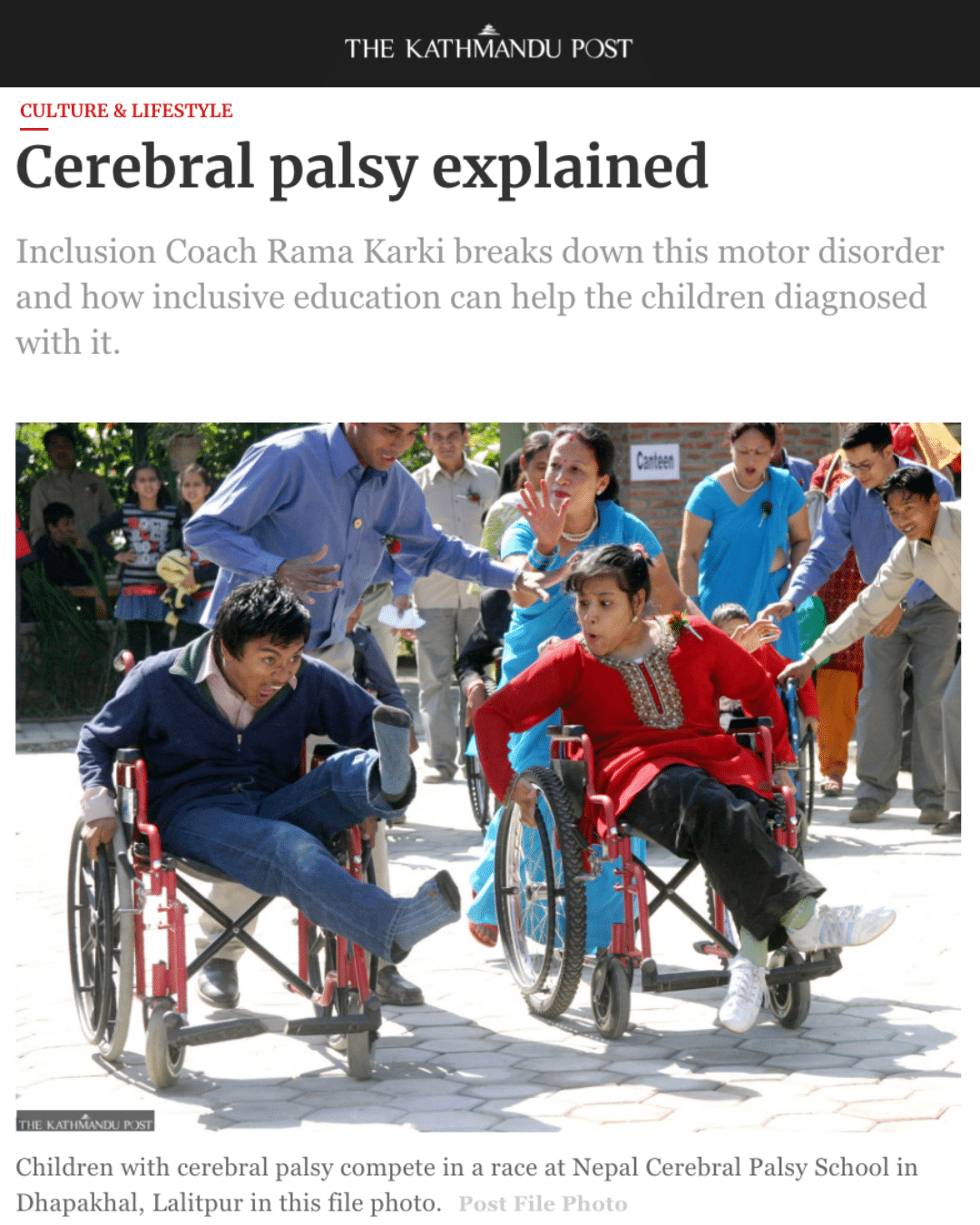
I was impressed by the dedication and commitment of the healthcare professionals in providing care to their patients despite limited resources. Part of my visit included time for parents of children with CP to come learn about basic toileting and mobility assistance for their children. We also went over recognizing when their children may be constipated and how that related their other critical rehabilitation needs.
Tips for Those Interested in Traveling to Nepal
I’d love to share a few travel tips for anyone planning to visit Nepal. If you’re looking for adventure, I’d highly recommend hiring a Sherpa and doing a trek in the Himalayas! It’s not all about Everest!! Treks are only scheduled during a few months out of the year. The first trek season is in March/April and the second is October/November.
My 11-day trek package included my Sherpa who assisted with carrying my bags and navigating our 180 KM adventure as well as a car to get around in the city, housing, and food.
There are a few things I’d recommend keeping in mind as you prepare for your trip.
- Remember, nodding side to side means yes! Not up and down!
- The toilets in Nepal are “squat toilets” (pictured below). There are very few western toilets in the country. In lieu of toilet paper, they wash with water sprayers. Yes, you read that correctly, no toilet paper. You can bring/buy tissue packets to keep with you and toss into a bucket when you’re done
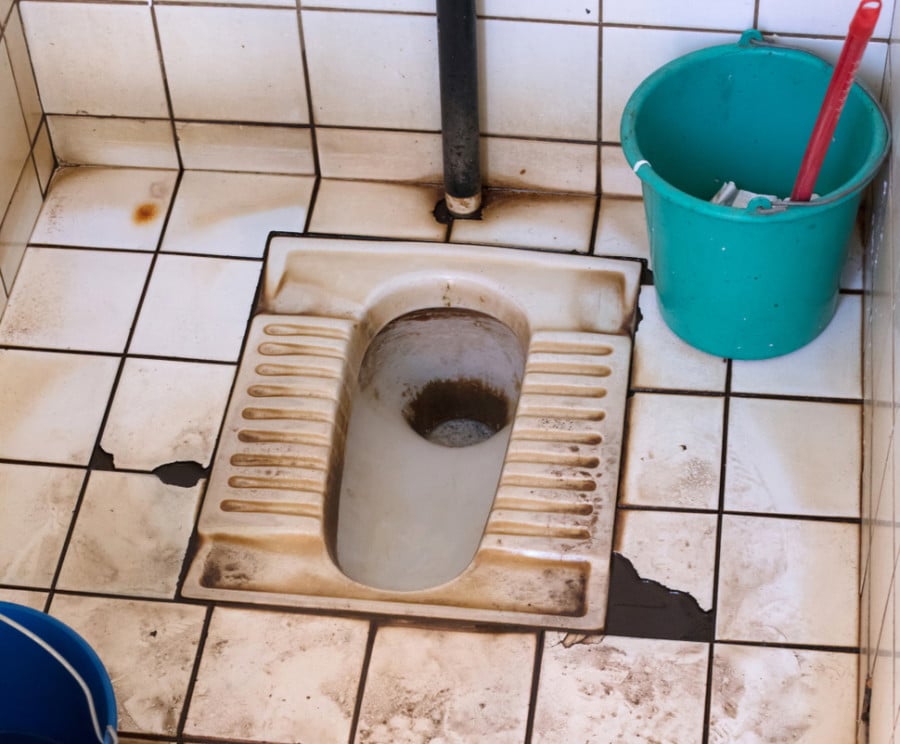
- For women, I highly recommend the Shewee for your treks!
- Many tourists in Nepal will wear a mask to help filter out the pollution in city
- Make sure the dollars you bring are newer (most places wouldn’t accept bills from before 2011), and they need to be free of wrinkles and tears
- If you’re traveling with a credit or debit card, make sure it’s a VISA. Many ATMs won’t accept Mastercard.
Despite the differences in toileting and nonverbal gestures, I highly recommend you visit if you ever get the chance!
Final Thoughts About Teaching Pediatric Incontinence and Pelvic Floor Dysfunction in Nepal
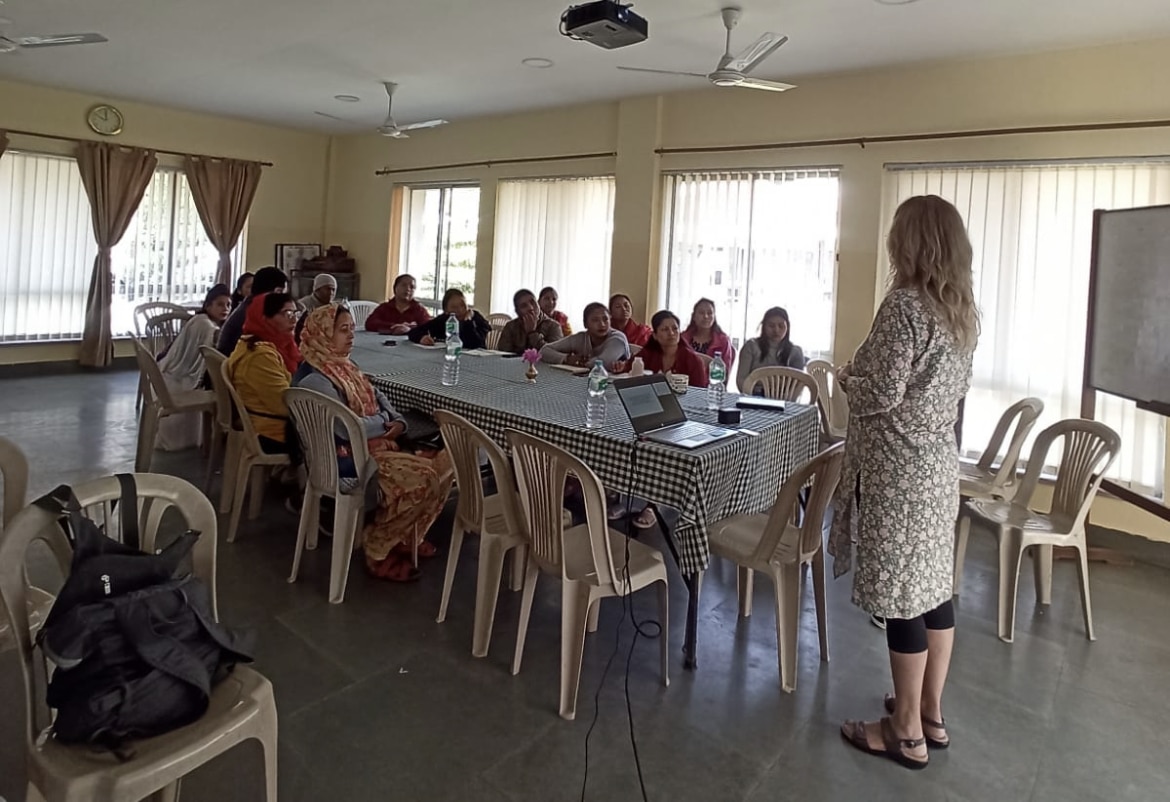
My time in Nepal was amazing, to say the least. I hope the work we did will have a lasting impact on the pediatric rehabilitation community for years to come.
This life-changing experience taught me so much about the Nepalese culture and healthcare system. I’m grateful for the opportunity to share my knowledge and learn from the Nepalese people.
I hope this blog inspires others to explore new cultures, learn from different healthcare systems, and to use your skills to make a positive impact on the world.
If you’re a clinician interested in learning more about pediatric pelvic floor dysfunction from anywhere in the world, you can check out my self-paced introductory online course, Peds Level 1 — Treatment of Bowel and Bladder Disorders: Evaluation and Treatment of Dysfunctional Voiding, Bedwetting, and Constipation.
